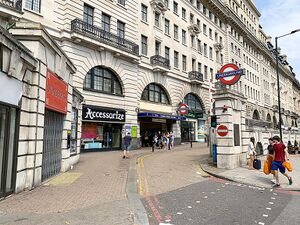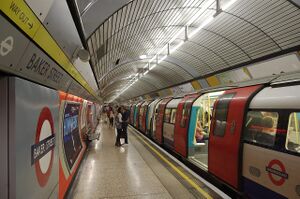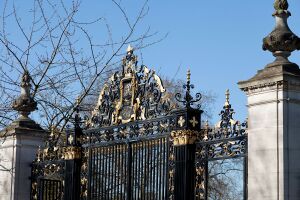Mary
| Mary | |||||
|---|---|---|---|---|---|
| Japanese Name | メアリー | ||||
| Weapon | |||||
| Race | Human | ||||
| Nationality | |||||
| Birthday | January 10 | ||||
| Constellation | Capricorn | ||||
| Talents | Swordsmanship of the Order | ||||
| Likes | Relating to roses | ||||
| Dislikes | People who lie to themselves | ||||
| Strengths | Consistent with her work | ||||
| Weaknesses | Somewhat short-tempered | ||||
| Hobbies | Viewing flowers | ||||
I am Mary Rosegarden, a knight of the Order of St. Iris. I have been wandering around in the Mist for a long time for various reasons... Supposedly. Anyways, you should say no more. Leave the fighting to me. I'm confident in my swordsmanship. I am the Former Knight Commander, after all.
Layers
| Icon | Title | Release Date | Where to Obtain |
|---|---|---|---|
| [Legendary Knight Commander] Mary | 2022 September 16 | [Knight Commander and the Rose Garden] Event Reward | |
| [Inherited Chivalry] Mary | 2022 September 16 | [Knight Commander and the Rose Garden] Event Reward | |
| [Knight of the Red Rose] Mary | 2022 September 16 | 2nd Anniversary Limited Gacha 1 | |
| [Knight of Summer Vacation] Mary | 2023 July 14 | [Seaweed Liquor and Pineapple Bread] Limited Gacha | |
| [Watering Time] Mary | 2024 April 30 | [Little Lady Predator] and Limited Gacha |
Skills
Profile
Main Story
| Story Arc 1 |
|---|
|
Mary Rosegarden was first encountered with her alias of "Queenrose" by the Conductor and his SSS team, She was discovered to be the culprit that's deliberately planting Steel Seekers inside the St. Iris forest, only to casually kill one of the Steel Seekers later after finding out that it produced the wrong type of Mist she was seeking. Queensway noticed that Queenrose owns a special-issue St. Iris Knight's sword - an award bestowed only to the most exemplary St. Iris knights who have distinguished themselves by acts of valor for the country, and no more than five individuals possess this. Queenrose claims that she found this sword while inside the Phantom Mist, making Queensway angry and claiming those to be mere fibs. Queenrose bade her farewells to the SSS after having two separate duels with Queensway, which she calls a "game". In both cases Queenrose has never fought seriously, though she commended that Queensway has some bare modicum of skill on her second duel. She is next seen talking to an exasperated Yuuzen who escaped the elite ninja team, the Tsukiyo Banshuu near the end of Chapter 5, half-jeering Yuuzen for being so restless, but acknowledged that she's running away from the real danger that is Ohana, daughter of Shibazakura, the former God of War, for if either of them dueled her, one of them would legitimately die. Queenrose met again with the protagonist team in the Verforet Saga. This time however, she agrees to have a temporary alliance with them to be rid of the Witch that is plaguing the Broceliant Forest as her presence and the Phantom Mist endangers the Resistance as well. Queenrose demonstrated even more of her power by easily deflecting a spell casted by a Vivienne, who went hysterical in trying to save her friends, and her magic levels went out of control. She fled again after this was settled. Queenrose later reveals that she is Mary Rosegarden, formerly a high ranking St. Iris knight, famous for her heroic deeds and her skill as the best knight in the country. However, she disappeared into the Mist along with her team and her whereabouts are unknown since. Years later, Mary reappears as "Queenrose" in disguise and became the masked executive of the Resistance, the organization that has differing views from the Special Steel Squad (SSS) regarding the Mist and has already clashed against several times in conflict. Prior to her disappearance, Mary also served as a training instructor for Queensway and King's Cross when they were young, the former additionally as her handmaiden, using the pseudonym of "Rosa". "Rosa" heavily influenced both girls' ideals and their way of thought, teaching the former the Knight's Code and to understand why she wants to go her career path, and teaching the latter to trust in her own gifted abilities and become a train knight instead of being someone else's housewife and 'staying in the kitchen' as other men teased her in parties. Her influence is very much to the distaste of their parents and King's Cross's spouse, which eventually got her fired from their premises. |
Trivia
- Mary's birthday is the opening date of Baker Street tube station in 1863. It is part of the London Metropolitan Railway, with gas-lit wooden carriages hauled by steam locomotives, it is the world's first passenger-carrying designated underground railway.
- Mary Rosegarden's name and her Queenrose alias, as well as the rose motifs on her outfit, is a reference to Queen Mary's Rose Gardens inside the Regent's Park, London.
- As a Resistance executive with the Queenrose alias, the faction emblem can be seen in the front of her dress as a light-blue crossed waist-strap.
- The gate in the background of [Knight of the Red Rose] is the Jubilee Gate, acting as the main entrance to Queen Mary's Rose Garden.
- Mary (Knight of the Red Rose) is the first Layer to exceed 200% in any stat without unlocking bonus Train Board stats.
Counterpart
Baker Street is a London Underground station at the junction of Baker Street and the Marylebone Road in the City of Westminster. It is one of the original stations of the Metropolitan Railway (MR), the world's first underground railway, opened on 10 January 1863. The station is in Travelcard Zone 1 and is served by five lines. On the Circle and Hammersmith & City lines it is between Great Portland Street and Edgware Road. On the Metropolitan line it is between Great Portland Street and Finchley Road. On the Bakerloo line it is between Regent's Park and Marylebone, and on the Jubilee line it is between Bond Street and St John's Wood.
In 1852, Charles Pearson planned a railway from Farringdon to King's Cross. Although the plan was supported by the city, the railway companies were not interested and the company struggled to proceed. The Bayswater, Paddington, and Holborn Bridge Railway Company was established to connect the Great Western Railway's (GWR) Paddington station to Pearson's route at King's Cross. A bill was published in November 1852 and in January 1853 the directors held their first meeting and appointed John Fowler as its engineer. Several bills were submitted for a route between Paddington and Farringdon. The company's name was also to be changed again, to Metropolitan Railway and the route was approved on 7 August 1854.
Baker Street station is the combination of three separate stations, with several booking offices throughout its operational years. Major changes took place in 1891-93 and 1910–12. The first part is the Circle Line station, which has its two platforms now used by the Circle and Hammersmith & City lines. They are situated on a roughly east-to-west alignment beneath Marylebone Road, spanning approximately the stretch between Upper Baker Street and Allsop Place. This was part of the original Metropolitan Railway from Bishop's Road (now Paddington (Circle and Hammersmith & City lines) station to Farringdon Street (now Farringdon) which opened on 10 January 1863.
The platforms serving the main branch of the Metropolitan line towards Harrow, Uxbridge and beyond are located within the triangle formed by Marylebone Road, Upper Baker Street and Allsop Place, following the alignment of Allsop place. This station is the second section which opened on 13 April 1868 by the Metropolitan & St. John's Wood Railway. This was later absorbed by the Metropolitan Railway, which is usually known to them as Baker Street East station. The final section is the deep-level tube station of the Baker Street & Waterloo Railway (now part of the Bakerloo line), situated at a lower level beneath the site of Baker Street East, opened on 10 March 1906. This part of the station now contains four platforms which are used by both the Bakerloo and Jubilee lines. Wikipedia
Regent's Park (officially The Regent's Park) is one of the Royal Parks of London. It occupies high ground in north-west Inner London, administratively split between the City of Westminster and the Borough of Camden (and historically between Marylebone and Saint Pancras parishes). In addition to its large central parkland and ornamental lake, it contains various structures and organizations both public and private, generally on its periphery, including Regent's University and London Zoo.
What is now Regent's Park came into possession of the Crown upon the dissolution of the monasteries in the 1500s, and was used for hunting and tenant farming. In the early 1800s, the Prince Regent proposed turning it into a pleasure garden. The Park was designed by John Nash and James and Decimus Burton. Its construction was financed privately by James after the Crown Estate rescinded its pledge to do so, and included development on the periphery of townhouses and expensive terrace dwellings. The park is Grade I listed on the Register of Historic Parks and Gardens.
The Jubilee Gates are grand iron and gilded semi-circular gates that were installed to mark the Silver Jubilee of King George V and the official opening of Queen Mary's Gardens in 1935. Located near York Bridge off the Inner Circle, The Jubilee Gates act as the main entrance to Queen Mary's Gardens. Although the park was initially the idea of the Prince Regent George IV, and was named for him, James Burton, the pre-eminent London property developer, was responsible for the social and financial patronage of the majority of John Nash's London designs, and for their construction.
Queen Mary's Rose Gardens, in the Inner Circle, were created in the 1930s, bringing that part of the park into use by the general public for the first time. The site had originally been used as a plant nursery and had later been leased to the Royal Botanic Society. The rose garden is London's largest collection of roses with approximately 12,000 roses planted within the gardens. There are 85 single variety beds on display, including one which is the 'Royal Parks' rose found only in this region. Examples of most rose varieties, from the classics to the most modern English roses, are present in the gardens. Royal Parks
Map
Gallery
- Pages using Tabber parser tag
- Pages using DynamicPageList3 parser tag
- Weapon Sword
- Human
- St. Iris
- Capricorn
- Element Cut
- Element Fire
- Element Water
- Element Wind
- Train Knights
- Resistance
- England








































